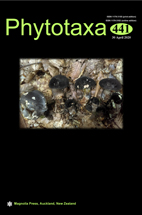Abstract
A new orchid species, Dendrobium yongjiaense, from Zhejiang, China, is described and illustrated here. Detailed morphological study indicates that D. yongjiaense is similar to D. monticola and D. strongylanthum, but it differs in the shape and size of leaf, flower size, and a mid-lobe of the lip with densly distinct crystalline papillae and wrinkled 3–5 crest lines in middle. Molecular phylogeny analyses based on the nrITS and plastid DNA (matK and trnL-F) reveal that D. yongjiaense is a member of sect. Stachyobium, and genetically similar to D. monticola.

